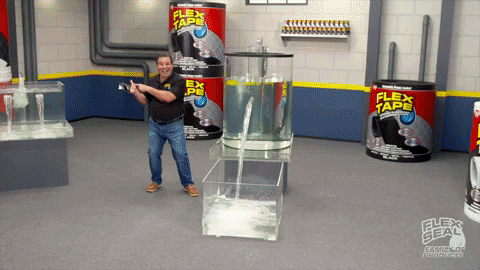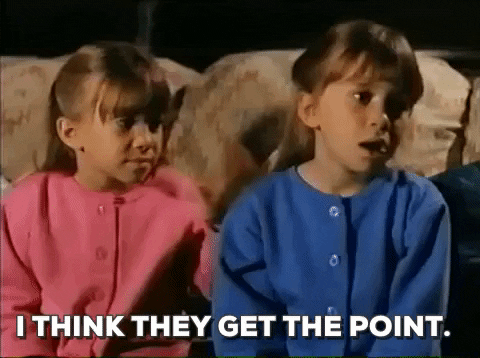Welcome to Volume 5 of The Merchant Life newsletter!
Our co-founder, Raj Dhiman, takes hold of the digital pen as we introduce the first part of his series – The Loyalty Experience.
Now let’s talk shop.
Specifically, why customer loyalty is important and outlining “Raj’s Loyalty Basics” which sets the stage for building up a loyalty program.
Seinfeld, Subs and Loyalty
Fans of Seinfeld might recall the episode (hint: it’s the festivus one) where Elaine doesn’t have her loyalty stamp card. She’s eaten 23 subs, and a 24th before being rewarded with a free sub and maybe a captain’s hat.
She laments when offered a sandwich at a different bagel shop:
It’s a great lesson in loyalty and why it works very well.
My B2B career started in selling loyalty solutions to small businesses in Canada – many of them retailers.
Supplement stores, vape stores and some of the earliest cannabis dispensaries were my customers.
I’ve seen retailers crush it with their programs and come back to me and say “You have helped us spend our marketing dollars in a much better way.”
It made sense to put down my observations from the past 5 years on loyalty, how it works and why retailers need to pay attention to it.
It goes way beyond a points card.
People don’t have time or money.
We have priorities. Time and money are simply fuel for those priorities.
When personal priorities change, buying patterns follow.
And priorities can shift for any number of reasons:
For example, if I have decided to train to be a competitive fighter, then I need to buy the right food, gear, supplementation and so on.
This differs from my priorities as a casual fitness enthusiast in the pursuit of personal health goals.
The events of 2020 have forced significant changes including:
- Hard shift towards delivery including of subscription boxes, fresh produce and other exotic items coming straight to your door.
- Protests on racial inequality shining the light on Black-owned businesses and consumers pushing to support them.
- Preserving the local economy by spending with small businesses, trying to help them survive the shutdown.
- Job losses mean families have to do with less while those still employed ramping up their savings – hence, consumer spending less now.
What this means is that as priorities change, consumers shift their buying patterns and will make 1st time purchases from new brands. Consumers are seeking newness, buying product aligned to their values or supporting and shopping small/local.
To quantify this, McKinsey has found that “Three out of four American consumers have tried a new shopping behaviour, and most intend to continue the new shopping behaviour even after COVID-19 subsides.”
This brings me to The Leaky Bucket.
All retailers lose customers over time, much like how the bucket with holes loses water.
To keep the bucket full, water has to be continuously added. In other terms, new customers have to be sought out.
The trouble is that a business can lose customers due to factors beyond their control e.g. they change/lose jobs or move away. Those holes in the bucket are permanent.
In my days of selling loyalty, we often cited research that stated that roughly half of all first time customers with a business do not make a second purchase. 1
As a result, although consumers are inevitably going to seek out new brands, businesses may not be prepared to convert those newcomers into steady, loyal customers.
In other words, they don’t have the right tools (if any) to patch up the bucket.
Salesforce acknowledges the problem in the announcement of their latest offering, Loyalty Management:
“While loyalty programs can help companies develop long term relationships with customers and drive growth, many rely on outdated, fragmented technology that fail to provide integrated experiences and are unable to evolve with industry trends.”
With the right tools, brands can build strong relationships with their customers.
And those relationships drive loyalty.
Points are Not the Point
We have a clearer understanding of the importance of loyalty and where it can be valuable.
The challenge now is to clarify a few of the basic ideas as to HOW to implement a loyalty program for a retailer.
1 – On Their Own, Points are Insufficient.
Retailers need to think about what behaviours they want to drive from their customer base; whether it’s driving traffic during slow periods, increasing basket size or pushing specific items.
Align rewards to match those desired behaviours.
I always cite the example of the PC Optimum program here in Canada. A Globe and Mail article from 2010 explains:
“The Optimum program has successfully changed behaviour by offering an incentive for customers to buy products at Shoppers Drug Mart they would usually buy elsewhere, such as dairy products or cosmetics. And by offering bonus points on various items, the company has provided itself with an alternative means to discount and move lagging inventory out of stores”
Now tying this back to Elaine the sub card – as consumers engage in behaviour to collect points, there is a higher value attached to the points versus the dollars spent to earn them. Hence, Elaine has a strong attachment to the card and is frustrated at the potential of missing out on the reward.
2 – Exclusivity a.k.a FOMO.
The best part of loyalty programs is that members feel like they are part of an exclusive club. Even within that club, VIP members should be entitled to get the best of the best perks.
And let’s face it, people don’t like to miss out.
Think about Amazon Prime and Costco, although they don’t have a traditional points-based system, these are some of the largest loyalty programs around. Amazon has an almost infinite sku count and assures Prime members that they will get next-day delivery. Costco on the other hand has a select number of sku’s but the pricing and bulk availability of products prove to be powerfully attractive to members.
In September 2020, Walmart launched its premium loyalty program, Walmart+. Members pay an annual fee to get free shipping on orders, free grocery delivery, gas discounts and mobile scan-and-go checkout. This validates the notion that premium loyalty programs and access to exclusive perks are here to stay as a marketing strategy.
3 – The Experience.
When lockdowns are lifted, traditional brick and mortar locations have a tremendous opportunity to re-invent the customer experience.
Retailers must look at the physical store as more than a place to conduct a transaction.
It needs to become a destination.
Becoming a destination that delivers a great experience needs many components.
Salesforce argues that the demand for convenience means retailers have to get their inventory management in check. Customers, as they increase their online searches for items ‘near me,’ can be assured that an item is in stock when needed.
I would argue that salesmanship amongst shop floor staff will be one of the best skills to have – not high pressure tactics, but a genuine interest in relationship building and making recommendations to customers.
Finally, there are experiences that are just not the same (or even possible) when delivered through digital. The sensory rush of smelling that newly released fragrance or trying on a cashmere sweater. From sampling the newest coffee at Nespresso to participating in a yoga class at Lululemon – experiences will entice your customers to the store.
Coupling the physical experience with exclusive and surprise events can create an emotional connection like no other.
And that’s just it – the emotional connection – that’s the point of loyalty.
The Loyalty Experience Continues
This is a brief introduction to loyalty and how retailers can benefit from it. However, this raises several questions, including:
- What makes for a good reward structure for a retailer?
- How can customers be enticed to try new items/services?
- What are the best performing loyalty programs out there?
There are many interesting topics to touch on and we will be cover them in more depth in future editions of The Loyalty Experience.



![[add-text output image] [add-text output image]](https://substackcdn.com/image/fetch/w_1456,c_limit,f_auto,q_auto:good,fl_lossy/https%3A%2F%2Fbucketeer-e05bbc84-baa3-437e-9518-adb32be77984.s3.amazonaws.com%2Fpublic%2Fimages%2Ff22cdf83-735c-418f-a128-771f1b86d860_512x384.gif)



